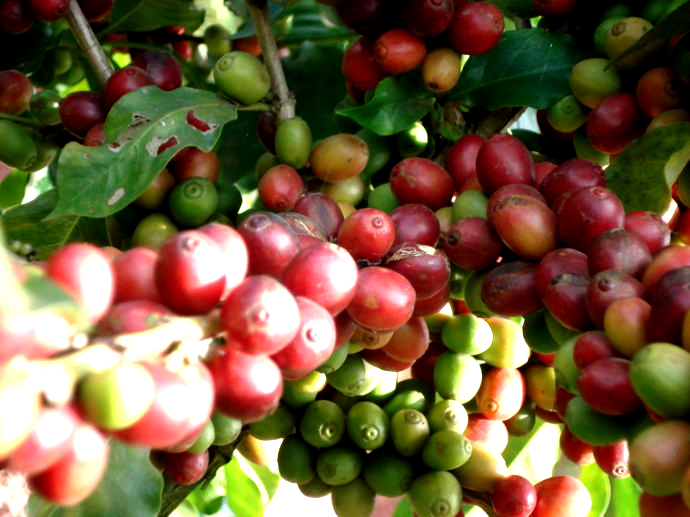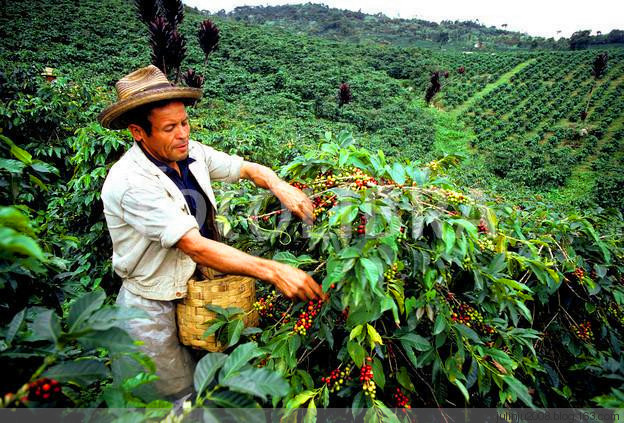There are several kinds of coffee beans in Aceh Ache province of Sumatra, Indonesia, how to turn coffee beans into coffee coffee.
Choose fresh coffee beans. Pay attention to whether the color and particle size of the beans are consistent when purchasing. Good coffee beans have a bright and shiny appearance, and have a strong aroma without mixing odors. No matter what kind of coffee beans, freshness is an important factor affecting quality. When purchasing, grab one or two coffee beans in the mouth to chew, to crisp sound (indicating that the coffee is not wet), teeth cheek fragrance is the top grade, but it is best to pinch with your hand, feel whether solid, rather than buy crispy shell coffee. If the coffee beans have lost their aroma or smell old, it means that the coffee beans are no longer fresh and are not suitable for purchase.
Freshly fried coffee beans are not suitable for immediate drinking and should be stored for a week in order to completely release the gases in the beans.
Generally speaking, the best drinking period of coffee is one week after frying, when the coffee beans are the freshest and the aroma (Aroma) tastes the best.
In addition, the purity of coffee beans is also another consideration factor, experts choose coffee, not necessarily to see the size of the particles, but to grab a handful of single coffee beans (Regional Coffee), about dozens of weight, to see whether the color of each single bean is consistent, particle size, shape is similar, so as not to buy mixed beans disguised as inferior products. But if it is a comprehensive bean (Blended Coffee), the size, color difference is a normal phenomenon. In addition, heavy fire and medium and deep roasting method will cause coffee beans to be oily, but if the beans are lightly roasted, it means that they have deteriorated, not only the degree of fragrance is reduced, but also astringent and sour. In short, when buying coffee, you should pay attention to its freshness, aroma and whether it has an old taste, and the ideal purchase quantity is to drink it in half a month. Two methods of coffee bean production after harvest to the market before shipment to remove the skin, pulp, skin and silver. There are two methods: drying (also known as natural method or non-washing) and washing.
Country: Indonesia
Grade: G1, 19 mesh +
Production area: Gayo Mountain Region, Aceh Province
Altitude: 1100-1300 m
Treatment: Traditional wet planing method
Breeds: Kadimo, Kadulla, Tibika, Sidikalong
Producer: Local smallholder farmers in the Gayo Mountains region
Flavor: Round and pure taste, excellent body, spices, herbs
Indonesian coffee is diverse in quality, most of which are named after island sources and markets such as Sumatra, Sulawesi, Jawa or Timur. The advantage of Indonesian coffee is that most coffees are characterized by strong, restrained flavors and lively moderate acidity. Indonesian Mandheling coffee is highly rated by Chinese and is one of the coffee products with the highest acceptance of single-serve coffee.
Mandheling Indonesia has been hailed as the world's best uniquely peeled coffee beans. Mantelin is a trademark product and is now sold as long as it is coffee green beans made from red cherry fruits harvested in Indonesia and processed by this unique peeling method. Mandailing coffee is grown by Mandailing people from Tapanuli region of northwest Sumatra, because at the end of World War II, a Japanese soldier introduced it to the Japanese market, and because of mispronunciation, Mandailing became Mandheling coffee.
Sumatra:
Sumatra coffee is very complex and elusive. Sumatra is a large island, but coffee is not grown all over the island. Coffee trees are grown in large quantities only in the northernmost two of the island's eight provinces-Aceh and Subei: Aceh coffee is mainly produced in Lake Tawar.(Lake Tawar) surrounding the Gayo Mountain, the farmers in this area are mostly local Gayo People aborigines; while coffee in Northern Jiangsu Province is mainly produced in the world's largest super crater lake-Lake Toba production area and Lintong production area in the south, and the local farmers are mostly Batak People aborigines. Due to the large number of smallholder producers and their unique semi-washing methods and the iron deficiency of the soil, coffee beans in this area will have a distinctive blue color at the fresh green stage.

Important Notice :
前街咖啡 FrontStreet Coffee has moved to new addredd:
FrontStreet Coffee Address: 315,Donghua East Road,GuangZhou
Tel:020 38364473
- Prev

Peruka Hamaka in Peru produces coffee beans. How many coffee beans can be made from coffee beans?
Choose fresh coffee beans. When buying, pay attention to whether the color of the beans and the size of the particles are the same. Good coffee beans are shiny and have a strong aroma without being mixed with peculiar smell. No matter what kind of coffee beans, freshness is an important factor affecting the quality. When shopping, grab one or two coffee beans and chew them in your mouth with crisp sound (indicating that the coffee is not damp) and teeth and cheeks.
- Next

The Shumawa Manor in the western valley of Costa Rica is insolated to make coffee from Vera sa coffee beans.
Choose fresh coffee beans. When buying, pay attention to whether the color of the beans and the size of the particles are the same. Good coffee beans are shiny and have a strong aroma without being mixed with peculiar smell. No matter what kind of coffee beans, freshness is an important factor affecting the quality. When shopping, grab one or two coffee beans and chew them in your mouth with crisp sound (indicating that the coffee is not damp) and teeth and cheeks.
Related
- Guji coffee producing area of Guji, Ethiopia: Humbela, Shakiso, Wulaga
- What is the most expensive variety of Qiloso in BOP multi-variety group?
- How to store the coffee beans bought home?
- Why are Yemeni coffee beans so rare now?
- Ethiopian Sidamo all Red Fruit Sun Sun Santa Vini Coffee beans
- SOE is mostly sour? What does it mean? Is it a single bean? what's the difference between it and Italian blending?
- Is Italian coffee beans suitable for making hand-brewed coffee?
- How to choose coffee beans when making cold coffee? What kind of coffee beans are suitable for making cold coffee?
- Just entered the pit to make coffee, what kind of coffee beans should be chosen?
- Can only Japan buy real Blue Mountain Coffee? What are authentic Jamaican Blue Mountain coffee beans?

